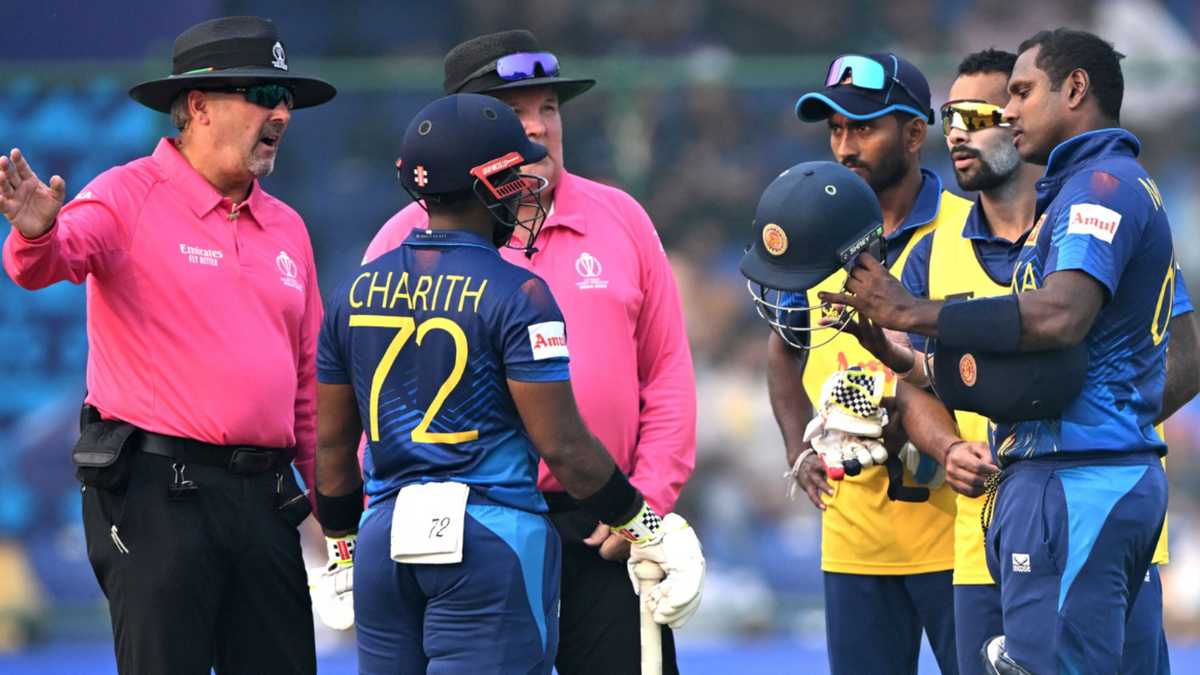
Angelo Mathews has become the first batter in the history of international cricket to be given out under the ‘Timed Out’ law in Sri Lanka’s World Cup clash against Bangladesh. Here’s what the laws and playing conditions say about Timed Out dismissals, and the history of its usage in cricket.
To bet on the World Cup with our Match Centre Partners bet365 head here.
What happened
The incident occurred in the 25th over of the game, with Sadeera Samarawickrama the batter dismissed before Mathews came in to bat. While Mathews was initially at the crease in good time, he asked for a change of helmet shortly before facing, realising he had broken his chin strap.
At this point, Shakib Al Hasan, the Bangladesh captain, appealed for a Timed Out dismissal, and while Mathews protested, he was sent on his way.
What do the rules say?
There is a small but important distinction between the Laws of Cricket and the ICC Playing Conditions here. The Timed Out law states: “After the fall of a wicket or the retirement of a batter, the incoming batter must, unless Time has been called, be ready to receive the ball, or for the other batter to be ready to receive the next ball within 3 minutes of the dismissal or retirement. If this requirement is not met, the incoming batter will be out, Timed out.”
The Playing Conditions state: “After the fall of a wicket or the retirement of a batter, the incoming batter must, unless Time has been called, be ready to receive the ball or for the other batter to be ready to receive the next ball within 2 minutes of the dismissal or retirement. If this requirement is not met, the incoming batter will be out, Timed out.”
The key point is the change in time between three minutes and two minutes, though it seems as if Mathews would have fallen foul of both requirements. The limit for Tests is also two minutes, while in T20Is, it is 90 seconds.
The other key point is that the batter must be ready to receive the ball within the time limit, rather than just out on the field.
Could Angelo Mathews have just faced one ball, and then called for a new helmet?
He could have done this. Nothing in the laws stops him from doing so. But by the time the three-minute mark expired, once Bangladesh chose to appeal, he couldn’t then decide to face up, having already exceeded the time limit, unless Bangladesh chose to let him.
What is the history of the Timed Out dismissal?
Angelo Mathews is the first batter in the history of international cricket to be Timed Out, but there have been some close shaves. Notably, Sourav Ganguly, in a 2007 Test match, took six minutes to take guard, with usual No.4 Sachin Tendulkar unable to come in to bat having been off the field at the end of the previous innings. However, Proteas captain Graeme Smith chose not to appeal.
There have been six instances in all men’s first-class cricket. The first recognised instance was of Tripura No.11 Hemulal Yadav against Orissa in the Ranji Trophy in 1997. There was an earlier instance, with Andrew Jordaan dismissed in the fashion while playing for Eastern Province against Transvaal in 1988, but this game has only latterly been awarded first-class status.








